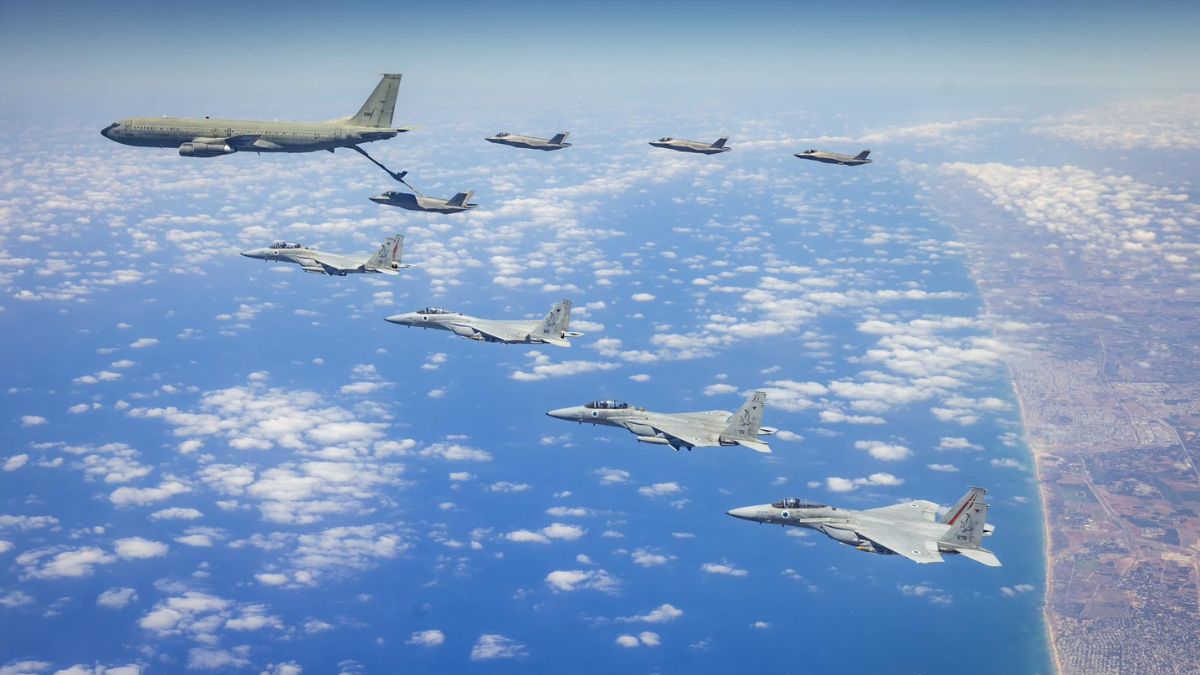How Israel's attack on Iranian nuclear sites could look: Two scenarios explained
 Representation | X
Representation | X
As the stalemate over the enrichment of uranium continues to threaten the Iran-US nuclear talks, reports claim Israel is preparing to strike the nuclear sites in Iran if talks collapse. While Israel is yet to acknowledge the reports, US President Donald Trump lent credibility to them by stating that he asked Israeli Prime Minister Benjamin Netanyahu not to take military action against Iran that could disrupt Washington’s ongoing nuclear negotiations with the Islamic Republic.
However, Israel, considering its limitations in attacking the nuclear sites - two prominent sites Fordow and Natanz are buried underground and heavily fortified which makes them almost immune to air raids - might go for a commando raid, according to Forbes.
The report, quoting sources, added that it remains questionable how much damage Israel can do without the US support, given the long distance between the two countries.
Scenario 1: Air strikes
Arash Azizi, a visiting fellow at Boston U, told Forbes that even with US support, Israel can only cause so much damage. "The work can pick up and continue. It’s all about what settlement is to follow the attacks," he added.
However, the strikes could leave Iran reeling as Israel had earlier demolished Iran's air defence systems, including Russian-built S-300, during last October's airstrikes. "Iran’s air defence will certainly be overwhelmed by a week-long Israeli campaign," Azizi said. "Also to the point, Iran’s lack of a proper air force will limit its ability to defend the country," Azizi added.
Iran is further debilitated by its dated air force, consisting mainly of third- and fourth-generation F-4 Phantom and F-14 Tomcat fighters inherited from the pre-1979 regime of the American-allied Shah. Though Iran has bought Soviet-made MiG-29A Fulcrums in the early 1990s, it is yet to receive the fourth-generation Su-35 Flankers it ordered from Russia earlier in this decade.
As for Israel, it has modern air force, the only one in the region to operate the fifth-generation American F-35 Lighting II stealth strike fighter.
However, an air strike on nuclear sites has its limitations. Two of Iran’s prominent nuclear facilities are the Natanz Enrichment Complex and the Fordow Fuel Enrichment Plant. Though the Iranian air defences are weaker than expected, there are limits to the damage that Israeli F-35I stealth jets inflict, considering that these sites are buried deep underground.
Israel would need huge bunker-buster munitions and bombers to damage these sites, which Israel lacks. The U.S. Air Force’s B-2 Spirit stealth bomber is currently the only aircraft certified to carry the 30,000-pound GBU-57A/B Massive Ordnance Penetrator but they have since left the region after the US ended the military attack against Houthis.
In such a case, the other scenario would be to strike Natanz and Fordow to render them at least temporarily unusable. Israel would use its F-35s to destroy air defences and then use F-15s and F-16s to carry out bombing runs.
Scenario 2: Commando
If Israel thinks air strikes aren't good enough, they can carry out a commando operation, like they did in Syria last year. "I think Israel can certainly plan on commando raids in Iran. It has a very impressive intelligence penetration in Iran, has focused on the country for decades, and carried out countless operations on Iranian soil, It is likely to achieve impressive results by such measures," Azizi told Forbes.
Last September, Israel had carried out a secret operation, titled Operation Many Ways' in which a commando raid was carried out against an Iranian missile production facility built beneath a mountain near Masyaf in northwest Syria. The Israeli commandos flew to the site in a chopper and placed explosives inside the area, which were subsequently detonated. The commandos left the country unhurt within an hour.
Middle East